Widex A S UNID UNI-DEX, Audio Control User Manual 9 514 0261 099 01 omslag indd
Widex A/S UNI-DEX, Audio Control 9 514 0261 099 01 omslag indd
Contents
- 1. User Manual
- 2. User Manual II
User Manual II
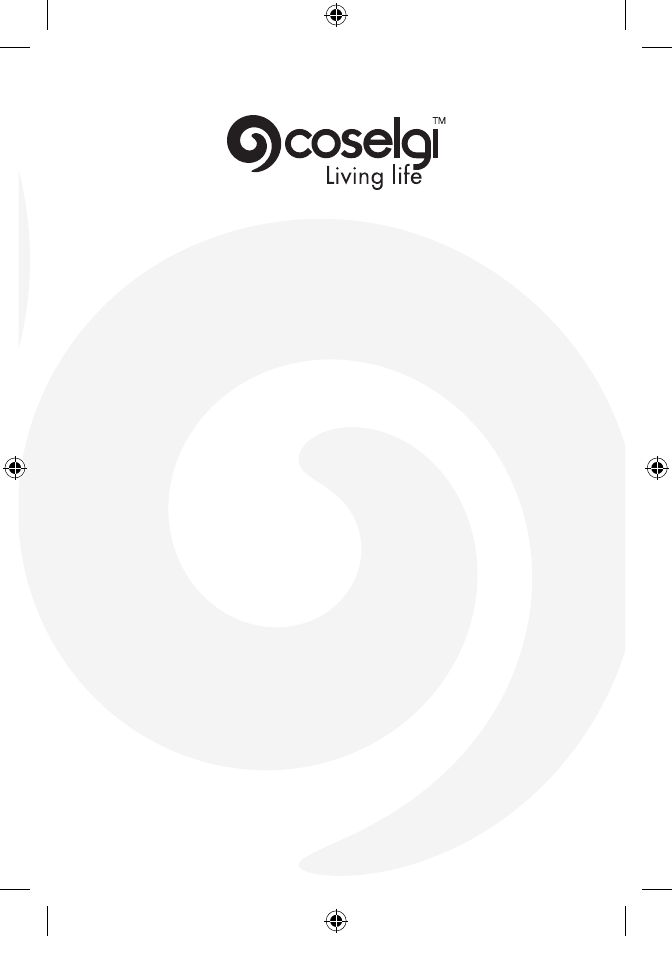
Audio Control
9 514 0261 099 #01 omslag.indd 7 21-11-2013 14:43:17
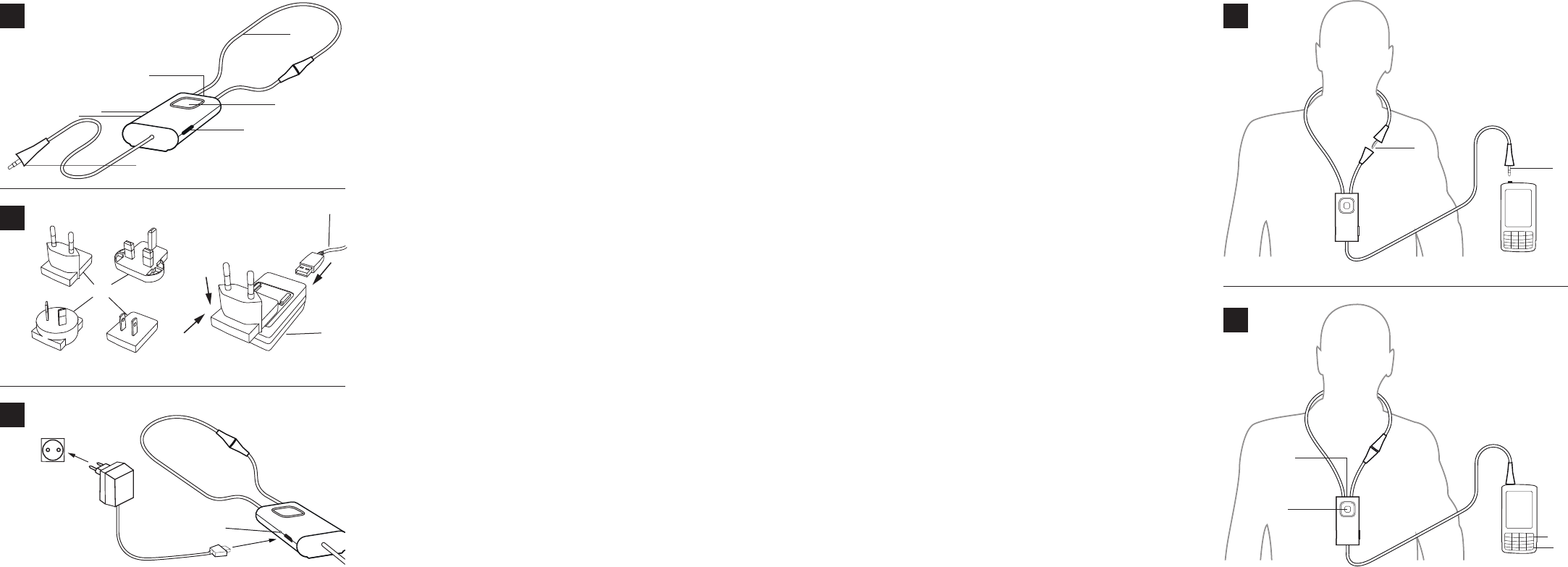
1.6 1.5
1.4
1.2
1.1
1.3
1.7
3.2
3.1
3.3
4.2
4.1
5.1
5.2
5.3
5.4
1 4
5
2
3
(1)
(2)
(3)
2.2
2.1
2.3
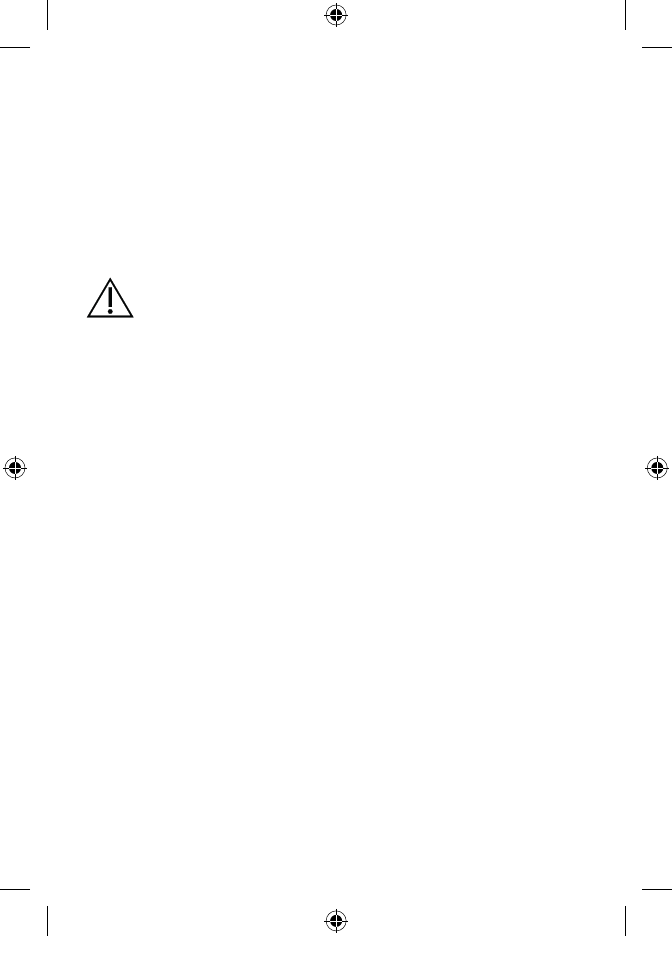
243
Description of Device – See illustration 1
Pushbutton
RoomOffbutton
Neckloop
Microphone
Chargingindicator
Chargerconnector
Jackplug
Read these instructions carefully before you start using the device
Intendeduse
This device is intended for use in transmitting audio from a mobile phone
to wireless hearing aids during a phone conversation, and for listening to
music from an audio source. The device can also be used as a headset.
Note: The device uses a standard 4-pole jack which is common in newer
mobile phones. If your mobile phone or audio source uses a different
configuration, it may not work with this product.
Accessories – See illustration 2
Charger
Plug(fourregion-specificversions)
Placetheappropriateplugversionontopofthechargerasillustrated()
andslideiton()
chArging – See illustration 3
Connectchargertodevice
Plugchargerintowallsocket
Redlightcharginggreenlightfullycharged
Batterylifehoursstreamingmonthsstandby
how to use – See illustration 4
Jointhetwoneckloopparts
Plugthejackcableintothemobilephoneoranappropriateaudio
device
9 514 0261 099_booklet.indb 243 21-11-2013 14:41:16
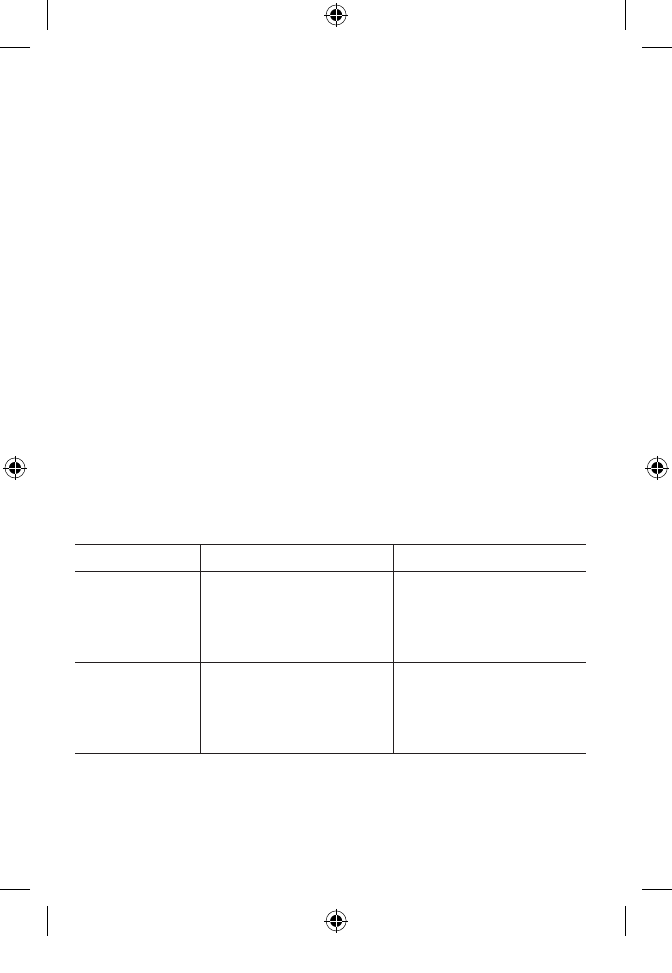
244
Incoming calls – See illustration 5
AnswerPresspushbutton
Speakintomicrophone
EndcallPresskeyonmobilephone
Outgoing calls– See illustration 5
Dialfromphone
Soundadjustmentduringuse
Volumeisadjustedattheaudiosource
TomutesurroundingsoundspressRoomOffbutton
MAintenAnce
• Clean with a damp cloth. Do not use chemicals.
• Do not expose to extreme temperatures or high humidity.
• Do not immerse in liquids.
• When the device is not in use keep it in a dry location out of reach of
children and pets.
• Never try to open or repair the device yourself. This may only be done
by authorized personnel.
troubleshooting
Problem Possible cause Solution
The device does
not work
a) Device battery low
b) The mobile phone is set to
silent mode
c) Hearing aid battery low
a) Charge device battery
b) Set to normal mode
c) Change hearing aid’s bat-
tery
No sound
No sound when
used with mobile
phone
a) Jack not fully inserted
b) Mobile phone does not
use standard jack plug
a) Make sure the jack is cor-
rectly connected
b) Contact hearing care pro-
fessional
If the problems persist, contact your hearing care professional.
9 514 0261 099_booklet.indb 244 21-11-2013 14:41:16
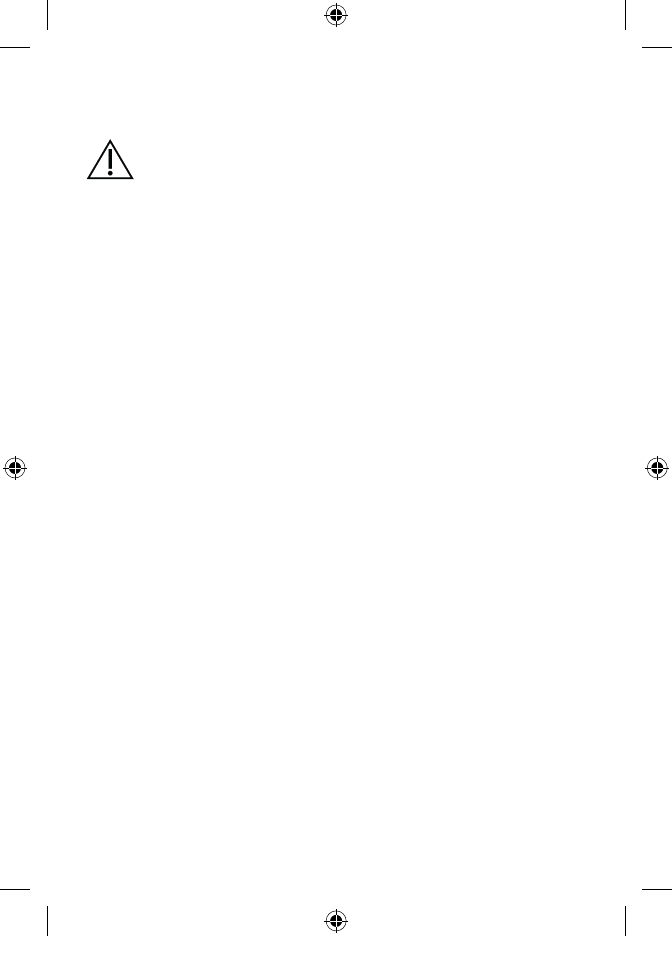
245
wArnings
warning
• Do not attempt to change the battery yourself. Contact your hearing care
professional.
• Do not carry your device with you if you are having an X-ray or MRI scan,
or other scans or radiation treatment and never place it in a microwave
oven.
• Keep the device and its parts and accessories out of reach of children
and anyone else who might swallow parts of the device, or otherwise
cause injury to themselves with these items. In case of ingestion, contact
a physician immediately.
• Do not use the device on aircraft or in hospitals without permission.
• Do not use the device in mines or other areas with explosive gases.
• This device is charged by an external power charger.
Only connect a charger that is compatible with the device.
The charger must have an output rating of 5VDC and a micro USB
connector.
The charger input rating voltage and wall plug must be compatible
with the AC wall outlet in your region.
The charger must have the certification marks showing certification by
a safety agency acceptable in your region.
Use only the charger supplied by the Manufacturer to ensure safe and
efficient use of your device.
• When the device is connected to external electrical equipment such as a
PC, audio source or similar, this equipment must comply with IEC 60065,
IEC 60950-1, IEC 60601-1 or equivalent safety standards.
• Interference with active Implants.
In order to show caution, we advise to follow the guidelines recom-
mended by manufacturers of defibrillators and pacemakers regarding
use of mobile phones:
9 514 0261 099_booklet.indb 245 21-11-2013 14:41:16
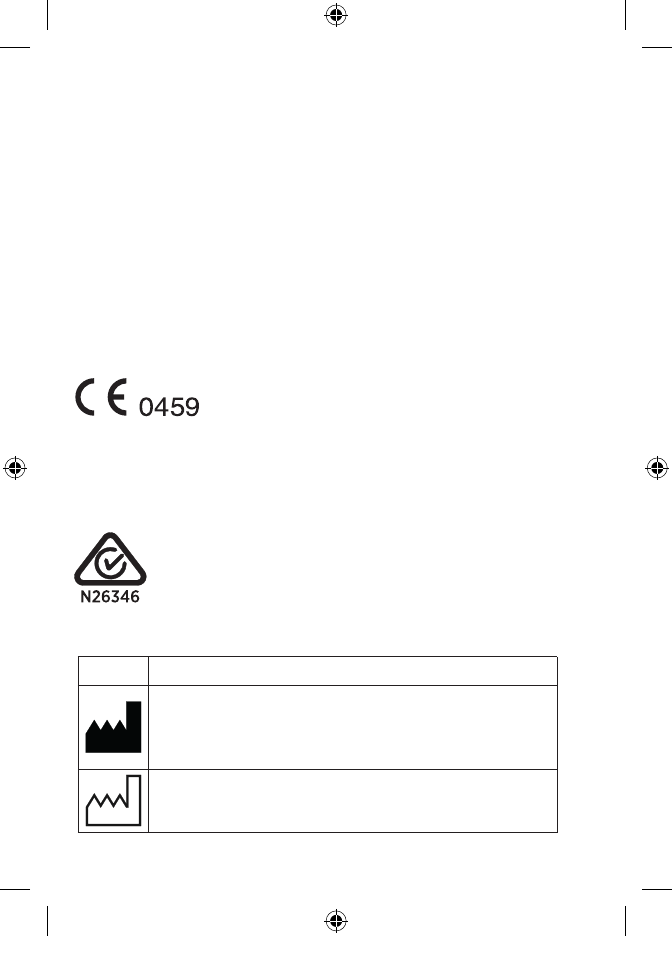
246
3
Symbol Title/Description
Lower limit of temperature
The lowest temperature to which the product can be
safely exposed.
Upper limit of temperature
The highest temperature to which the product can be
safely exposed.
Temperature limits
The highest and lowest temperatures to which the prod-
uct can be safely exposed.
Consult instructions for use
The user instructions contain important cautionary infor-
mation (warnings/precautions) and must be read before
using the product.
Caution/Warning
Text marked with a caution/warning symbol must be
read before using the product.
WEEE mark
“Not for general waste”
When the product is to be discarded, it must be sent to
a designated collection point for recycling and recovery.
CE mark
The product is in conformity with the requirements set
out in European CE marking directives.
If you wear an active implantable device keep the Wireless Hearing
Aids and Hearing Aid Accessories such as wireless remote controls or
communicators at least 15 cm/6 inches away from the implant.
If you experience any interference, do not use the hearing aids and
contact the manufacturer of the implant. Please note that interference
can also be caused by power lines, electrostatic discharge, airport
metal detectors etc.
If you have an active brain implant, please contact the manufacturer of
the implant for risk evaluation.
If you have an implantable device, we advise keeping magnets* at
least 15 cm/6 inches away from the implant. (*= can be specified as
Autophone magnet, hearing instrument case, magnet in a tool, etc.)
Hereby, Coselgi A/S declares that this Audio Control is in compliance
with the essential requirements and other relevant provisions of Directive
1999/5/EC.
A copy of the Declaration of Conformity can be found at:
http://www.coselgi.com/doc
2
syMbols
Symbol Title/Description
Manufacturer
The product is produced by the manufacturer whose
name and address are stated next to the symbol. If ap-
propriate, the date of manufacture may also be stated.
Date of manufacture
The date when the product was manufactured.
Use-by date
The date after which the product is not to be used.
Batch code
The product’s batch code (lot or batch identification).
Catalog number
The product’s catalog (item) number.
Serial number
The product’s serial number.
Keep away from sunlight
The product must be protected from light sources and/or
The product must be kept away from heat
Keep dry
The product must be protected from moisture and/or
The product must be kept away from rain
9 514 0261 099_booklet.indb 246 21-11-2013 14:41:19
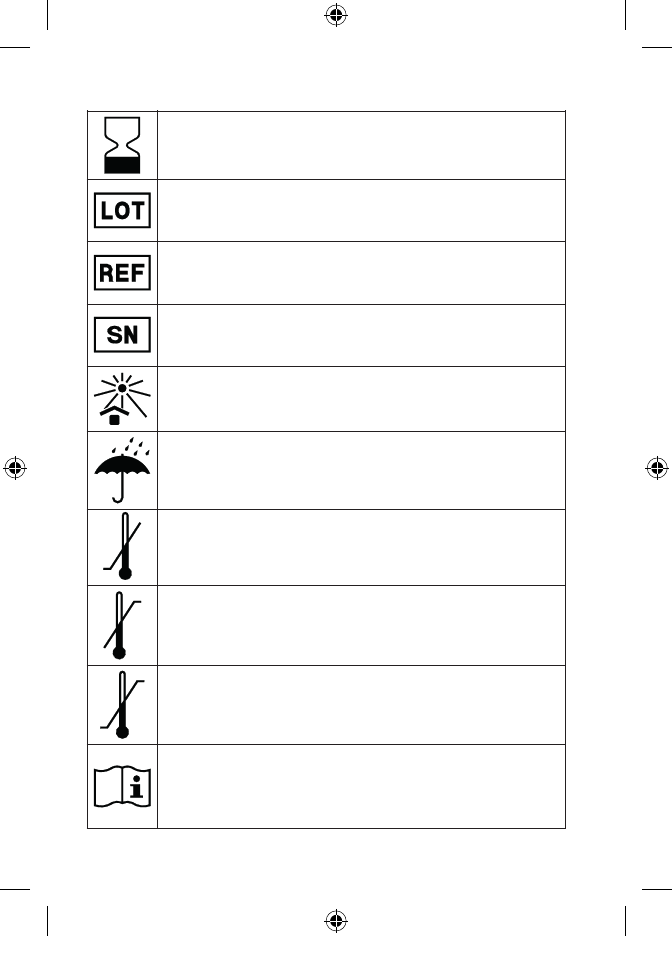
247
2
syMbols
Symbol Title/Description
Manufacturer
The product is produced by the manufacturer whose
name and address are stated next to the symbol. If ap-
propriate, the date of manufacture may also be stated.
Date of manufacture
The date when the product was manufactured.
Use-by date
The date after which the product is not to be used.
Batch code
The product’s batch code (lot or batch identification).
Catalog number
The product’s catalog (item) number.
Serial number
The product’s serial number.
Keep away from sunlight
The product must be protected from light sources and/or
The product must be kept away from heat
Keep dry
The product must be protected from moisture and/or
The product must be kept away from rain
3
Symbol Title/Description
Lower limit of temperature
The lowest temperature to which the product can be
safely exposed.
Upper limit of temperature
The highest temperature to which the product can be
safely exposed.
Temperature limits
The highest and lowest temperatures to which the prod-
uct can be safely exposed.
Consult instructions for use
The user instructions contain important cautionary infor-
mation (warnings/precautions) and must be read before
using the product.
Caution/Warning
Text marked with a caution/warning symbol must be
read before using the product.
WEEE mark
“Not for general waste”
When the product is to be discarded, it must be sent to
a designated collection point for recycling and recovery.
CE mark
The product is in conformity with the requirements set
out in European CE marking directives.
9 514 0261 099_booklet.indb 247 21-11-2013 14:41:19
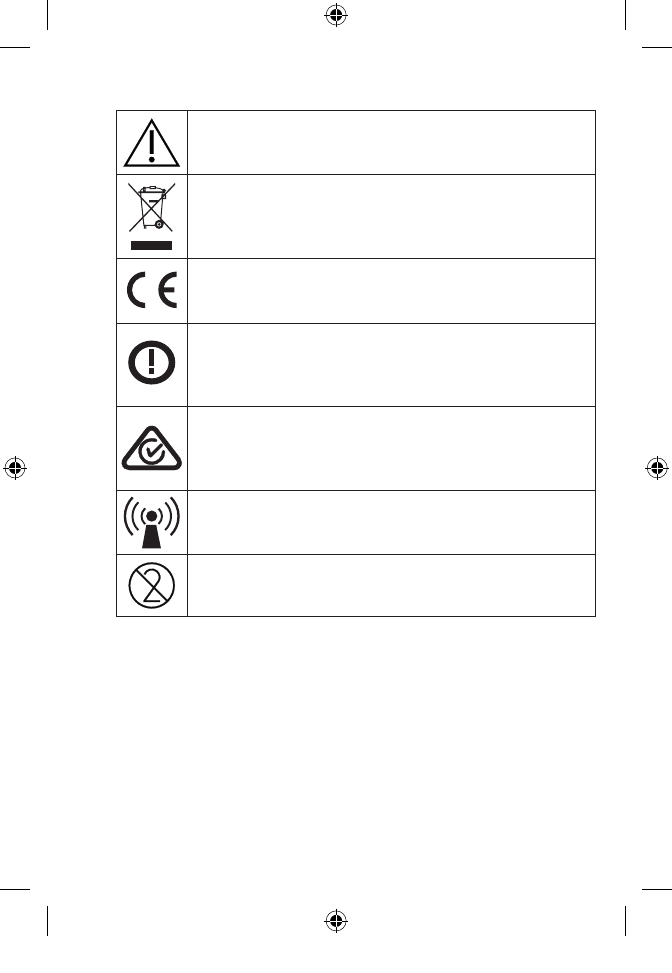
248
3
Symbol Title/Description
Lower limit of temperature
The lowest temperature to which the product can be
safely exposed.
Upper limit of temperature
The highest temperature to which the product can be
safely exposed.
Temperature limits
The highest and lowest temperatures to which the prod-
uct can be safely exposed.
Consult instructions for use
The user instructions contain important cautionary infor-
mation (warnings/precautions) and must be read before
using the product.
Caution/Warning
Text marked with a caution/warning symbol must be
read before using the product.
WEEE mark
“Not for general waste”
When the product is to be discarded, it must be sent to
a designated collection point for recycling and recovery.
CE mark
The product is in conformity with the requirements set
out in European CE marking directives.
4
Symbol Title/Description
Alert
The product is identified by R&TTE Directive 1999/5/EC
as an equipment Class 2 product with some restrictions
on use in some CE member states.
C-Tick mark
The product complies with electrical safety, EMC and ra-
dio spectrum regulatory requirements for products sup-
plied to the Australian or New Zealand market.
Interference
Electromagnetic interference may occur in the vicinity of
the product.
Do not re-use
The product is intended for use by a single user.
The six-digit number on the product is the serial number.
9 514 0261 099_booklet.indb 248 21-11-2013 14:41:20
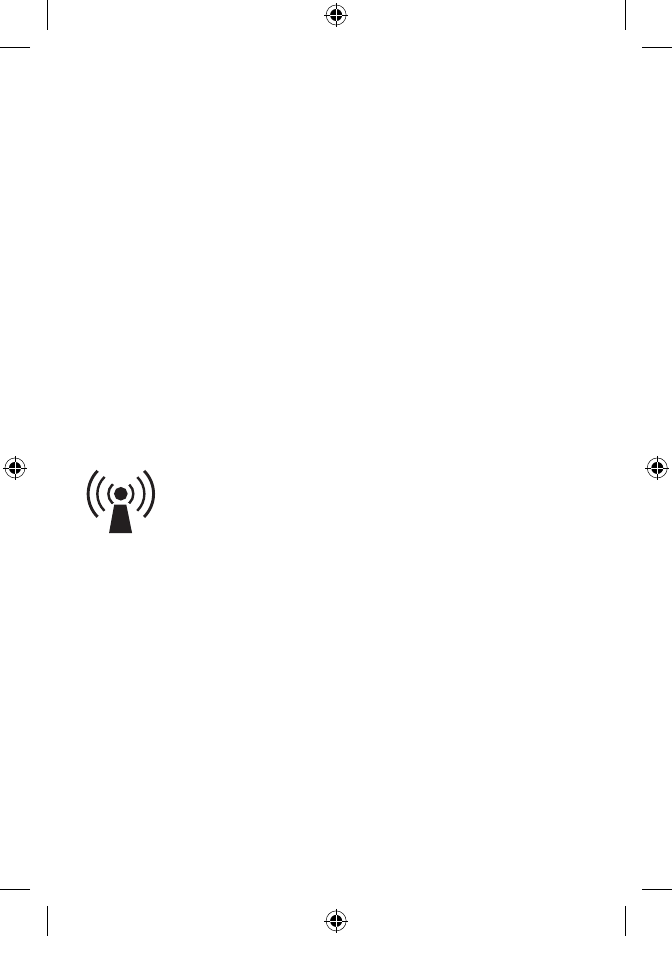
249
REGULATORY INFORMATION
Radiotransmittercablestransducers
TheAudioControlcontainsaradiotransmitterreceiverwiththefollowing
Radiotransmitterparameters
• Frequency (range): 10.6 MHz (10.2 – 11.0 MHz)
• Bandwidth (-15dB): 660 kHz
• Channel: Single channel radio
• Modulation: FSK
• Radiated Output Power: -85.2 dBm/ 3.02pw(ERP effective radiated
power
• Magnetic field strength: -26.9 dBµA/m (at 10 m distance)
• Duty Cycle: Up to 100% (averaged over 1 hour of operation)
• Simplex capability
Cablesandtransducers
TheAudioControlusesafixed-polemmjackcableforaudioinputsig-
nal
3
Symbol Title/Description
Lower limit of temperature
The lowest temperature to which the product can be
safely exposed.
Upper limit of temperature
The highest temperature to which the product can be
safely exposed.
Temperature limits
The highest and lowest temperatures to which the prod-
uct can be safely exposed.
Consult instructions for use
The user instructions contain important cautionary infor-
mation (warnings/precautions) and must be read before
using the product.
Caution/Warning
Text marked with a caution/warning symbol must be
read before using the product.
WEEE mark
“Not for general waste”
When the product is to be discarded, it must be sent to
a designated collection point for recycling and recovery.
CE mark
The product is in conformity with the requirements set
out in European CE marking directives.
4
Symbol Title/Description
Alert
The product is identified by R&TTE Directive 1999/5/EC
as an equipment Class 2 product with some restrictions
on use in some CE member states.
C-Tick mark
The product complies with electrical safety, EMC and ra-
dio spectrum regulatory requirements for products sup-
plied to the Australian or New Zealand market.
Interference
Electromagnetic interference may occur in the vicinity of
the product.
Do not re-use
The product is intended for use by a single user.
The six-digit number on the product is the serial number.
9 514 0261 099_booklet.indb 249 21-11-2013 14:41:20
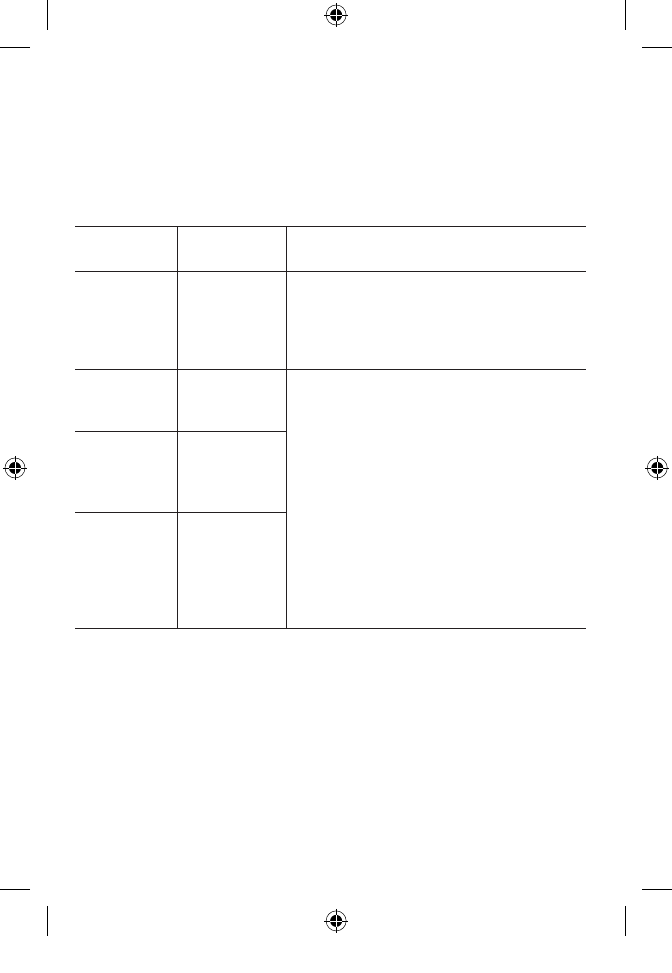
250
Guidanceandmanufacturer’sdeclaration
Electromagneticemissions
TheAudioControlisintendedforuseintheelectromagneticenvironment
specifiedbelowThecustomerortheuserofaAudioControlshouldassure
thatitisusedinsuchanenvironment
Emissions
test Compliance Electromagnetic environment
- guidance
RF
emissions
CISPR 11
Group 1 The Audio Control uses RF energy only
for its internal function. Therefore, its RF
emissions are very low and are not likely
to cause any interference in nearby
electronic equipment.
RF
emissions
CISPR 11
Class B The Audio Control is suitable for use in
all establishments, including domestic
establishments and those directly
connected to the public low-voltage
power supply network that supplies
buildings used for domestic purposes.
Harmonic
emissions
IEC
61000-3-2
Not
applicable *)
Voltage
fluctua-
tions/ flicker
emissions
IEC
61000-3-3
Not
applicable *)
*) Battery powered equipment
9 514 0261 099_booklet.indb 250 21-11-2013 14:41:20
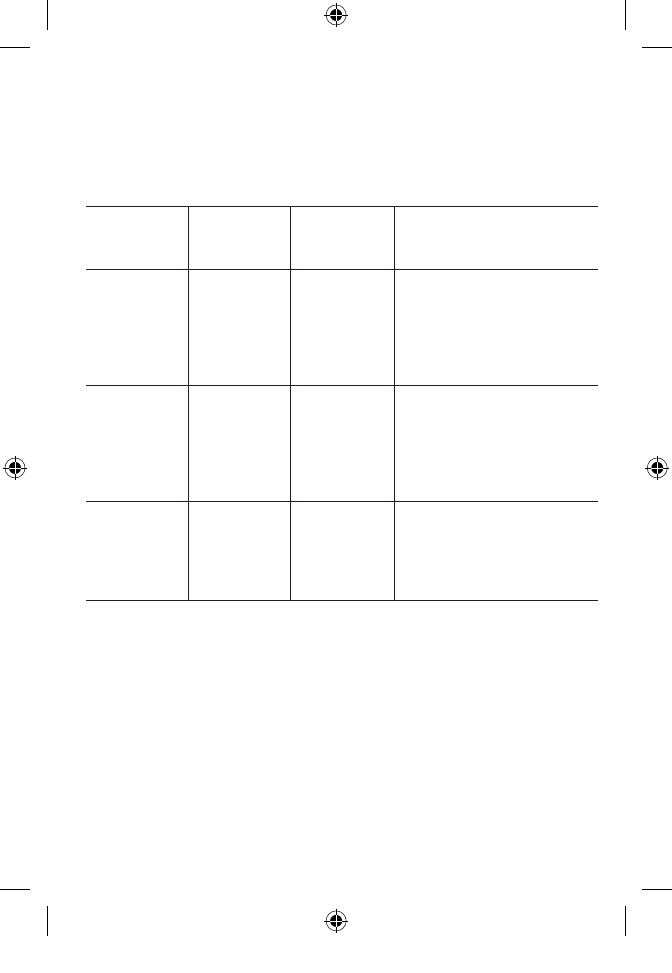
251
Electromagneticimmunity
TheAudioControlisintendedforuseintheelectromagneticenvironment
specifiedbelowThecustomerortheuserofaAudioControlshouldassure
thatitisusedinsuchanenvironment
Immunity
Test IEC 60601
Test level Compliance
level Electromagnetic environ-
ment
– guidance
Electro-
static
discharge
(ESD)
IEC
61000-4-2
± 6 kV
contact
± 8 kV air
± 6 kV
contact
± 8 kV air
Floors should be wood,
concrete or ceramic tile.
If floors are covered with
synthetic material, the
relative humidity should
be at least 30 %.
Electrical
fast
transients/
burst
IEC
61000-4-4
± 2 kV for
power line
supplies
± 1 kV for
input/
output lines
Not
applicable *)
Not
applicable *)
Not
applicable *)
Surge
IEC
61000-4-5
± 1 kV line(s)
to line(s)
± 2 kV
line(s) to
earth
Not
applicable *)
Not
applicable *)
Not
applicable *)
9 514 0261 099_booklet.indb 251 21-11-2013 14:41:20
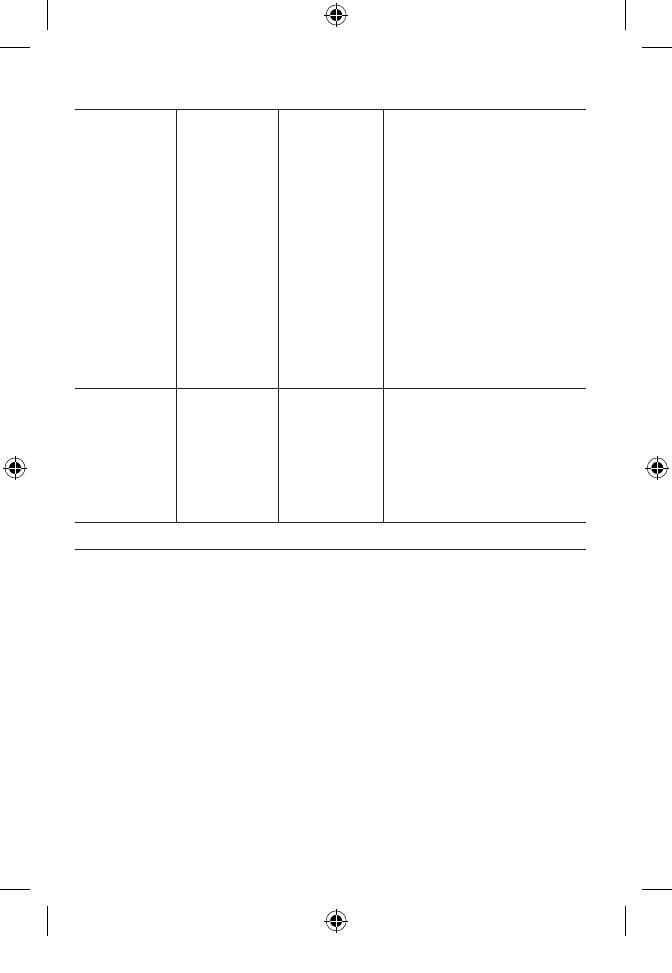
252
Voltage
dips, short
inter-
ruptions
and voltage
variations
on power
supply input
lines
IEC
61000-4-11
<5 % UT
(>95 % dip
in UT
) for
0.5 cycle
40 % UT
(60 % dip
in UT
) for 5
cycles
70 % UT
(30 % dip
in UT
) for 25
cycles
<5 % UT
(>95 % dip
in UT
) for 5 s
Not
applicable *)
Not
applicable *)
Power
frequency
(50/60 Hz)
magnetic
field
IEC
61000-4-8
3 A/m 3 A/m Power frequency magnetic
fields should be at levels
characteristic of a typical
location in a typical
commercial or hospital
environment
NOTE UT is the a.c. mains voltage prior to the application of the test level.
*) Battery powered equipment
9 514 0261 099_booklet.indb 252 21-11-2013 14:41:20
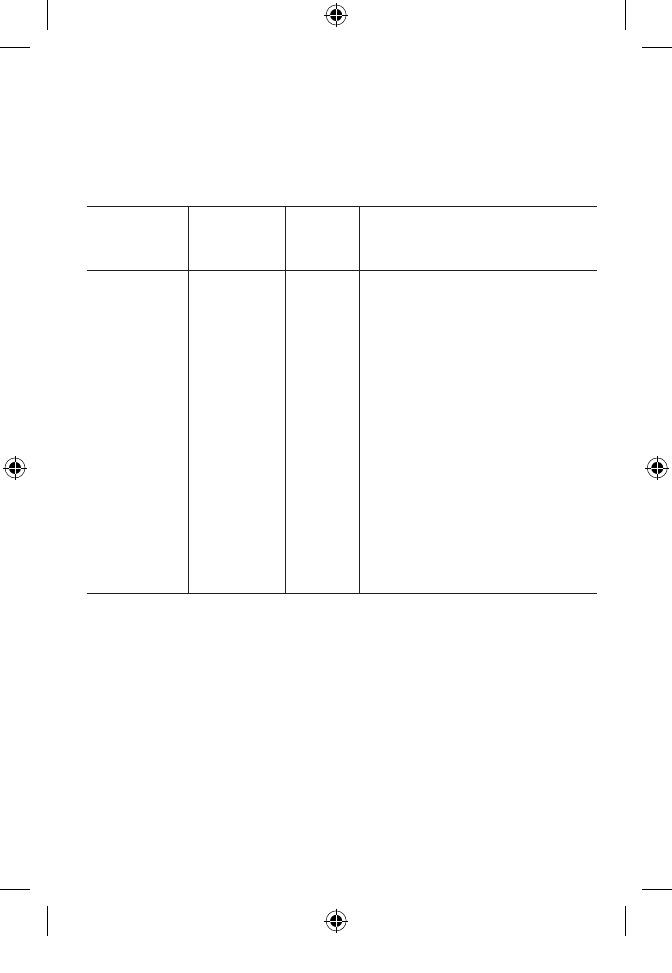
253
Electromagneticimmunity–cont
TheAudioControlisintendedforuseintheelectromagneticenvironment
specifiedbelowThecustomerortheuserofaAudioControlshouldassure
thatitisusedinsuchanenvironment
Immunity
Test IEC 60601
Test level Compli-
ance
level
Electromagnetic
environment
– guidance
Portable and mobile RF
communications equipment
should be used no closer to
any part of the Audio Control,
including cables, than the
recommended separation
distance calculated from the
equation applicable to the
frequency of the transmitter.
Conducted
RF
IEC
61000-4-6
3 Vrms
150 kHz to
80 MHz
3 Vrms
Recommended separation
distance
d = 1.2 √P
9 514 0261 099_booklet.indb 253 21-11-2013 14:41:20
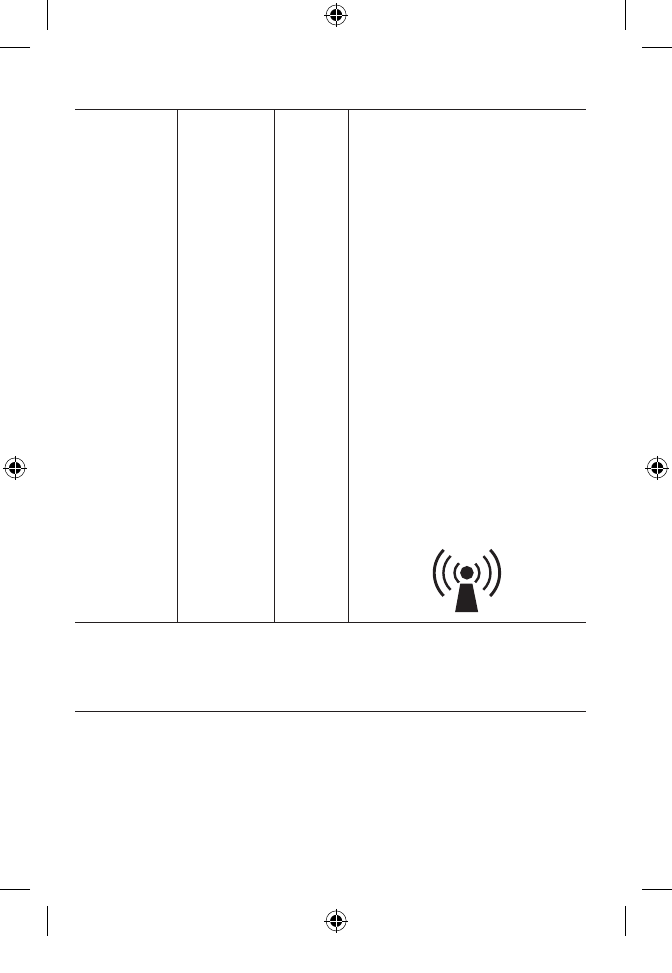
254
Radiated RF
IEC
61000-4-3
3 V/m
80 MHz to
2.5 GHz
3 V/m d = 1.2 √P
80 MHz to 800 MHz
d = 2.3 √P
800 MHz to 2.5 GHz
Where P is the maximum
output power rating of the
transmitter in watts (W)
according to the transmitter
manufacturer and d is the
recommended separation
distance in metres (m).
Field strengths from fixed RF
transmitters, as determined
by an electromagnetic site
survey a, should be less than
the compliance level in each
frequency range b.
Interference may occur in the
vicinity of equipment marked
with the following symbol:
NOTE 1 At 80 MHz and 800 MHz, the higher frequency range applies
NOTE 2 These guidelines may not apply in all situations. Electromagnetic propa-
gation is affected by absorption and reflection from structures, objects and peo-
ple.
9 514 0261 099_booklet.indb 254 21-11-2013 14:41:20
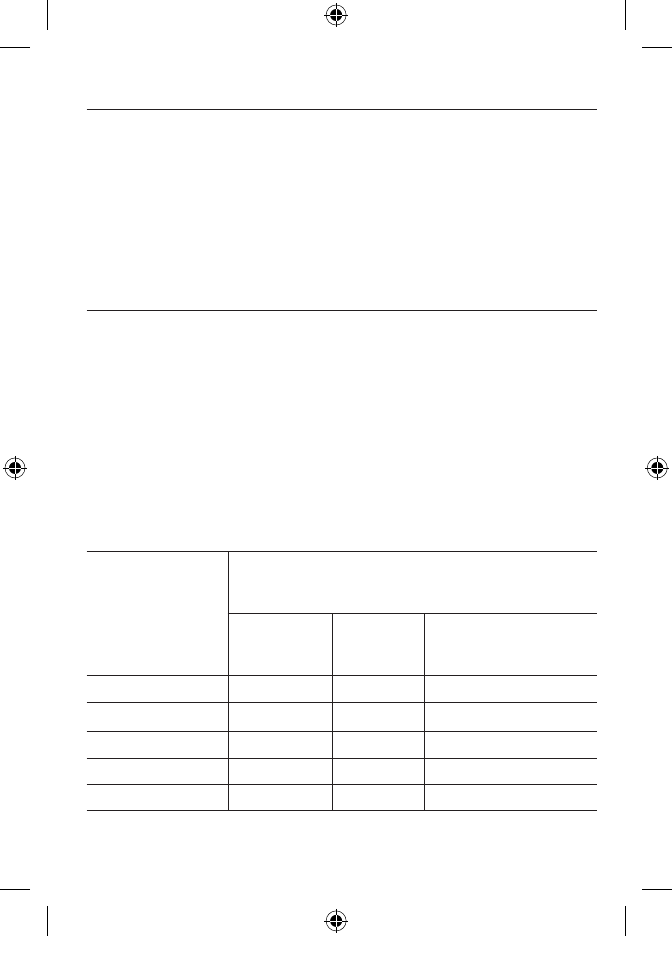
255
a. Field strengths from fixed transmitters, such as base stations for radio (cellular/
cordless) telephones and land mobile radios, amateur radio, AM and FM radio
broadcast and TV broadcast cannot be predicted theoretically with accuracy. To
assess the electromagnetic environment due to fixed RF transmitters, an electro-
magnetic site survey should be considered. If the measured field strength in the
location in which the Audio Control is used exceeds the applicable RF compliance
level above, the Audio Control should be observed to verify normal operation. If
abnormal performance is observed, additional measures may be necessary, such
as re-orienting or re-locating the Audio Control.
b. Over the frequency range 150 kHz to 80 MHz, field strengths should be less
than 3 V/m.
Recommendedseparationdistances
Recommended separation distances between portable and mobile RF
communicationequipmentandtheAudioControl
TheAudioControlisintendedforuseintheelectromagneticenvironmentin
whichRFdisturbancesarecontrolledThecustomerortheuseroftheAudio
Controlcanhelppreventelectromagneticinterferencebymaintainingamin-
imumdistancebetweenportableandmobileRFcommunicationsequipment
(transmitters)andtheAudioControlasrecommendedbelowaccordingto
themaximumoutputpowerofthecommunicationsequipment
Rated maximum
output power of
transmitter
W
Separation distance according
to frequency of transmitter
m
150 kHz to
80 MHz
d = 1.2 √P
80 MHz to
800 MHz
d = 1.2 √P
800 MHz to 2.5 GHz
d = 2.3 √P
0.01 0.12 0.12 0.23
0.1 0.38 0.38 0.73
11.2 1.2 2.3
10 3.8 3.8 7.3
100 12 12 23
9 514 0261 099_booklet.indb 255 21-11-2013 14:41:20
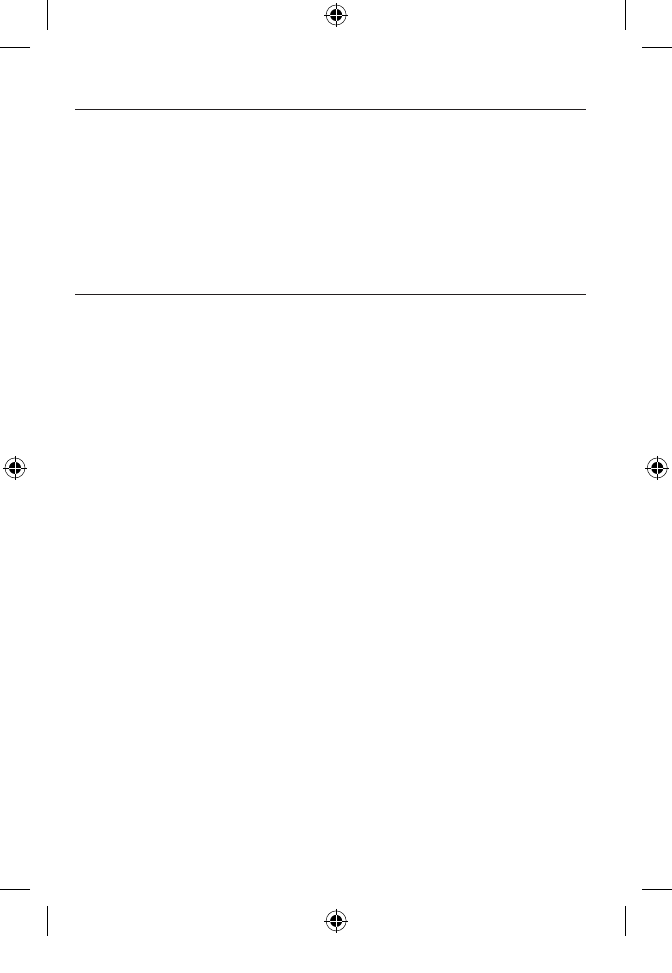
256
For transmitters rated at a maximum output power not listed above, the recom-
mended separation distance d in metres (m) can be estimated using the equation
applicable to the frequency of the transmitter, where P is the maximum output
power rating of the transmitter in watts (W) according to the transmitter manu-
facturer.
NOTE 1 At 80 MHz and 800 MHz, the higher frequency range applies
NOTE 2 These guidelines may not apply in all situations. Electromagnetic propa-
gation is affected by absorption and reflection from structures, objects and peo-
ple.
ThisAudioControlmaybeinterferedwithbyotherequipmentevenifthat
otherequipmentcomplieswithCISPRemissionrequirements
9 514 0261 099_booklet.indb 256 21-11-2013 14:41:21
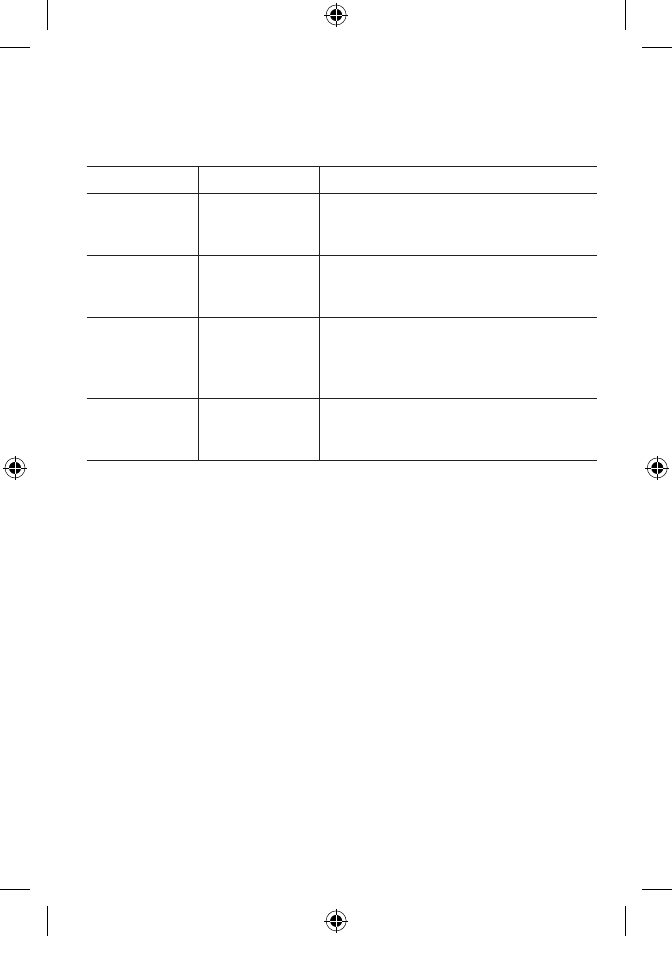
257
EMCEMICompliance
TheAudioControlcomplieswiththefollowingEMCEMIstandards
Standard Test type Note
47 CFR Part
15, subpart C
RF emissions USA Federal Communications
Commission (FCC) requirements to
intentional radiators.
EN 300
330-2 V1.5.1
RF emissions
incl. Spurious
emission
EMC and radio spectrum matters
for Short Range Devices in the
frequency range 9 kHz – 25 MHz
IEC 60601-1-
2:2007
EMC emission
Immunity, RF
and ESD
Medical electrical equipment.
General requirements for basic safety
and essential performance.
Electromagnetic compatibility.
EN 301 489-3
V1.4.1
Immunity, RF
and ESD
Standard for Low Power Transmitters
in the frequency range
9 kHz – 40 GHz
9 514 0261 099_booklet.indb 257 21-11-2013 14:41:21
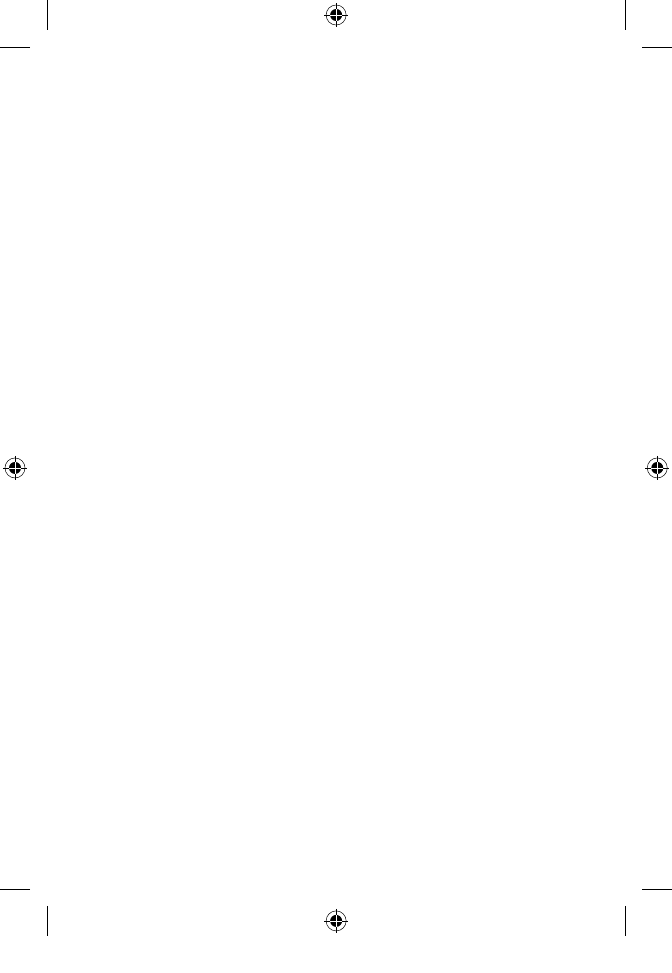
276
regulAtory inforMAtion
FCC ID: TTY-UNID
IC: 5676B-UNID
CAN ICES-3 (B)/NMB-3 (B)
Federal Communications Commission Statement
This device complies with part 15 of the FCC Rules.
Operation is subject to the following two conditions:
(1) This device may not cause harmful interference, and
(2) this device must accept any interference received, including
interference that may cause undesired operation.
NOTE:
This equipment has been tested and found to comply with the
limits for a Class B digital device, pursuant to part 15 of the FCC
Rules. These limits are designed to provide reasonable protection
against harmful interference in a residential installation. This
equipment generates, uses and can radiate radio frequency
energy and, if not installed and used in accordance with the inst-
ructions, may cause harmful interference to radio communica-
tions. However, there is no guarantee that interference will not
occur in a particular installation. If this equipment does cause
harmful interference to radio or television reception, which can be
determined by turning the equipment off and on, the user is
encouraged to try to correct the interference by one or more of
the following measures:
— Reorient or relocate the receiving antenna.
— Increase the separation between the equipment and receiver.
— Connect the equipment into an outlet on a circuit different
from that to which the receiver is connected.
— Consult the dealer or an experienced radio/TV technician for help.
NOTE:
This equipment complies with FCC radiation exposure limits set
forth for an uncontrolled environment. This transmitter must not
be co-located or operating in conjunction with any other antenna
or transmitter.
9 514 0261 099_booklet.indb 276 21-11-2013 14:41:35
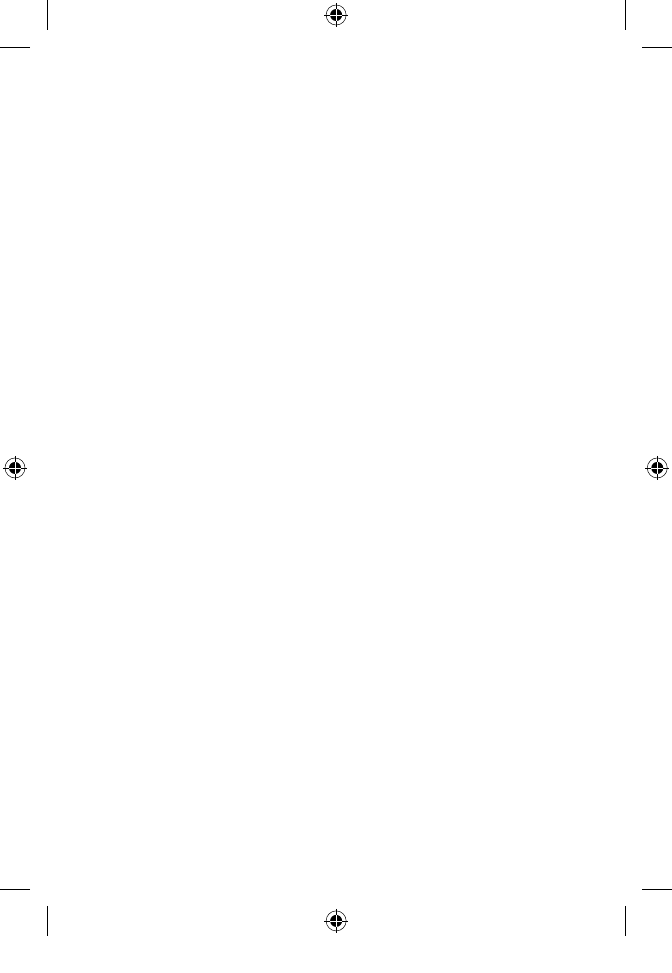
277
Changes or modifications to the equipment not expressly appro-
ved by Coselgi could void the user’s authority to operate the
equipment.
Industry Canada Statement / Déclaration d’industrie Canada
Under Industry Canada regulations, this radio transmitter may
only operate using an antenna of a type and maximum (or lesser)
gain approved for the transmitter by Industry Canada.
To reduce potential radio interference to other users, the antenna
type and its gain should be so chosen that the equivalent isotro-
pically radiated power (e.i.r.p.) is not more than that necessary for
successful communication.
This device complies with Industry Canada licence-exempt RSS
standard(s). Operation is subject to the following two conditions:
(1) this device may not cause interference, and
(2) this device must accept any interference, including interfe-
rence that may cause undesired operation of the device.
Conformément à la réglementation d’Industrie Canada, le présent
émetteur radio peut fonctionner avec une antenne d’un type et
d’un gain maximal (ou inférieur) approuvé pour l’émetteur par
Industrie Canada.
Dans le but de réduire les risques de brouillage radioélectrique à
l’intention des autres utilisateurs, il faut choisir le type d’antenne
et son gain de sorte que la puissance isotrope rayonnée équiva-
lente (p.i.r.e.) ne dépasse pas l’intensité nécessaire à
l’établissement d’une communication satisfaisante.
Le présent appareil est conforme aux CNR d’Industrie Canada
applicables aux appareils radio exempts de licence. L’exploitation
est autorisée aux deux conditions suivantes:
(1) l’appareil ne doit pas produire de brouillage, et
(2) l’utilisateur de l’appareil doit accepter tout brouillage radioé-
lectrique subi, même si le brouillage est susceptible d’en compro-
mettre le fonctionnement.
9 514 0261 099_booklet.indb 277 21-11-2013 14:41:35
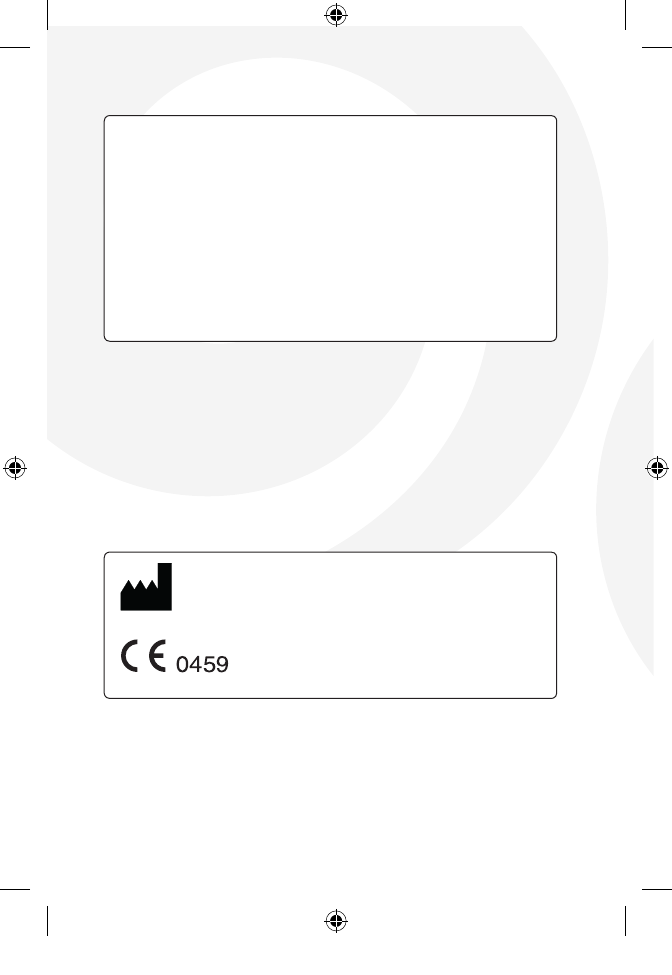
COSELGI A/S Nymoellevej 6, DK-3540 Lynge, Denmark
www.coselgi.com
É[5qr0w6|a;ll;s]
Manual no.:
9 514 0261 099 #01
9 514 0261 099 #01 omslag.indd 6 21-11-2013 14:43:17